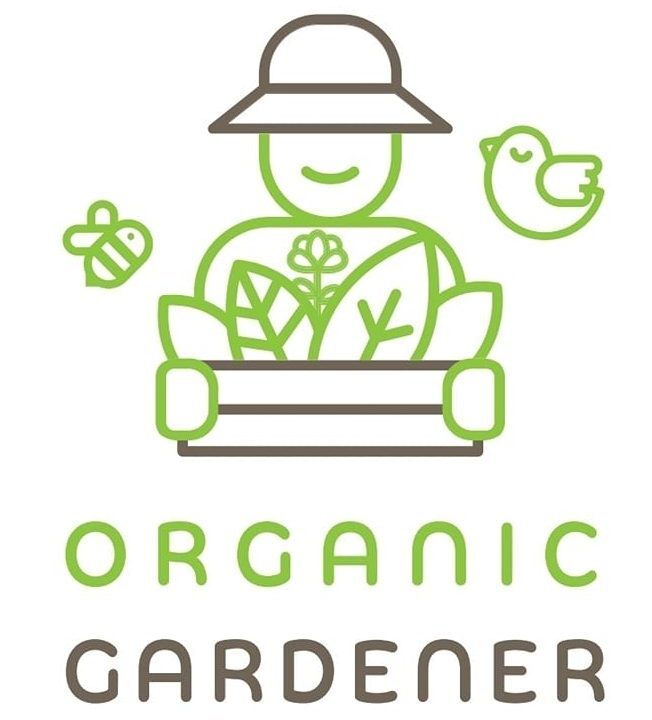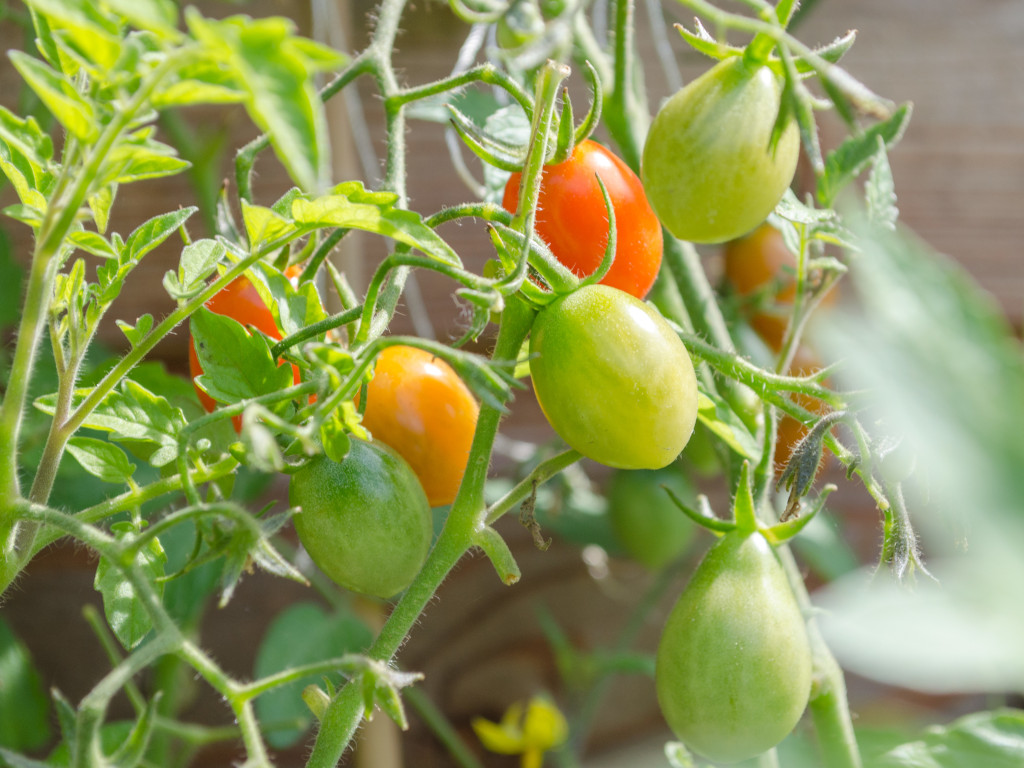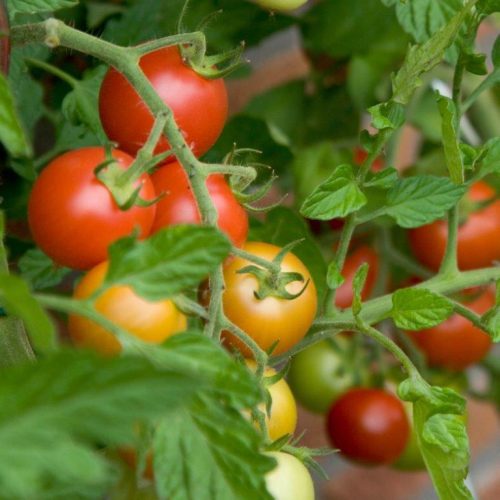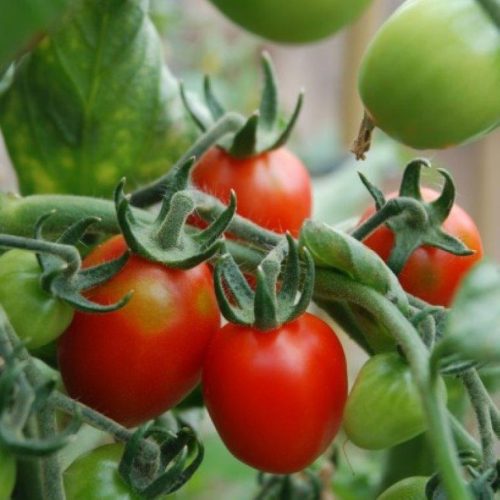Tomatoes belong to the nightshade family, like potato, courgette, sweet pepper and aubergine. Tomato is a fruit crop. Even though the tomato is a subtropical plant, this fine vegetable is completely native to our regions. Professional growers grow tomatoes exclusively in greenhouses. To provide domestic tomatoes in spring and autumn too, the greenhouses are heated considerably. Together with lettuce and cucumber, tomatoes are the most important greenhouse vegetables in our country.
The tomato is a juicy, two- or multi-lobed fruit vegetable that can have different shapes. There are red, orange, yellow, pink and white fruits. Tomatoes have a jelly-like substance with seeds between the seeds.
How to Grow your own Tomatoes
From March to May you can pre-sow tomatoes in a seed tray at home or in the greenhouse. Use organic potting soil or sowing soil. At a room temperature of 20 degrees, the seeds germinate after about ten days. When the seedlings have about 3 leaves, repot them to a larger pot with potting and container compost. In May or June, tomatoes can be taken outside in open soil.
When planting tomato plants in full soil, you will need to make sure to put them in a sunny position and at least 50 cm apart, so that each plant will later have enough space to grow.
When the tomato plant grows bigger, start leading, or tying up, the plant. Use twine, sticks or special tomato racks for this. This prevents the stems from snapping due to the weight of the fruit or a summer storm or downpour.
In terms of care, tomato plants mainly need a sunny spot and warm, well fertilised, permeable soil. Always water at the base of the plant. This way your tomato will be less prone to fungal diseases.
Preferably water once a week instead of a little bit every day. This way, your tomato plant develops longer, deeper roots and therefore a stronger root system. Water tomatoes a lot, but only until they start to colour. Then water moderately, otherwise the fruit will burst!
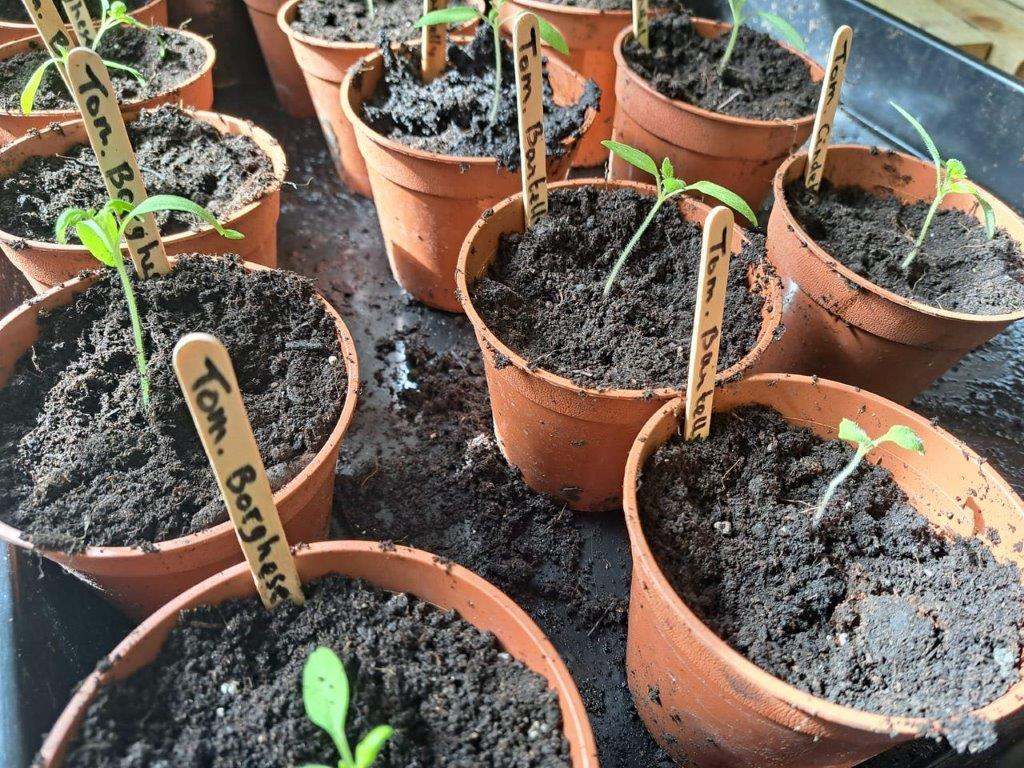
Tomato Varieties
Climbing tomatoes and stem tomato plants should be cutted back every week. Remove the new stems in the plant’s axillary shoots. These stems are superfluous twigs that will take much energy from the plant. By removing these stems between the plant’s axillary shoots, you will get stronger plants with strong stems and tasty fruits.
Remove axillary shoots, preferably as soon as you see it appear. Then the ‘wound’ in the tomato plant’s armpit will heal better and you run less risk of disease and fungi.
As soon as the plants get bigger and heavier, support them by tying them to a pole.
Although tomatoes pollinate themselves (together with insects), you can help fertilise them as soon as yellow flowers appear. By gently shaking the plants every now and then, pollen will be released faster and you will increase the chances of a tomato growing from the flowers.
In August, about ten weeks after sowing, the first tomatoes in your garden are ripe for harvesting.
Always pick above the crown to keep the fruit fresh for longer.
When the cold sets in in September, it is often wise to also harvest the tomatoes that have not yet ripened.
Tomato’s Season
From June until October. Outdoor tomatoes are available during the summer months. In shops, you will find tomatoes all year round. Indeed, professional growers grow them all year round in heated greenhouses. Light heating (limited heating) extends the cold-glazing season and heavy heating plants in winter to harvest in spring.
Tomatoes can be grown outdoors in our climate, but ‘reasonable’ weather is necessary. If the summer is cold and wet, the plants outside do not grow and it becomes very difficult to keep them free of diseases and fungi. Many tomatoes are imported, mainly from Spain.
How to store Tomatoes?
A tomato does not belong in the refrigerator. The temperature in there is too low, which reduces the release of aromatic substances in the tomato. In addition, the high humidity causes a spoilage process that continues inside the tomato. Externally, the tomato still looks nice, but it has lost many of its specific sweet, sour and spicy flavours.
Ripe tomatoes spoil quickly. The best temperature is between 8 and 10° Celsius. At this temperature, you can store tomatoes for several weeks. Re-ripening tomatoes (green ones) is also a form of storage. With some luck, you can keep eating your tomatoes until the end of November.
Tomatoes that are already starting to colour can be stored the longest at 10 to 12° Celsius. Green tomatoes need at least 13° Celsius to continue colouring. The lower the temperature, the faster the tomato loses its aroma.
Tomatoes excrete ethylene gas. This is a substance that affects the ripening process of (other) fruits. It is therefore best to store them separately and not together with other fruits in the vegetable drawer. You can freeze tomatoes, but then they can only be used for soups, sauces or other warm preparations. You can also pickle (pasteurise) tomatoes and use them in chutney, ketchup, sauce and puree.
Nutritional Value of Tomato
Tomatoes are rich in vitamins A, B9 and C, fibre, carotene and lycopene (antioxidant). The riper the tomato, the more lycopene it contains.
Tomato in the kitchen
The plant used to be known as an ornamental crop and was thought to be poisonous. All parts of the plant contain the toxic solanine. Solanine is found in plants belonging to the nightshade family. It is a natural toxin produced under the influence of light in potatoes, among others.
In unripe (green) tomatoes, the related tomatine occurs. In large quantities, solanine is toxic to humans. Symptoms such as fever, drowsiness, lethargy, abdominal pain, diarrhoea, vomiting, anxiety, breathlessness, weakness and depression can occur after excessive intake (> 25 mg).
Solanine is very heat-resistant and is not broken down by cooking. However, heating does reduce the solanine content. Part of the solanine dissolves in the cooking liquid, which is therefore best not used for further food preparation. Well-ripened fruits contain no solanine, except for traces of it in the seeds. Mineral fertilisers increase the solanine content.
